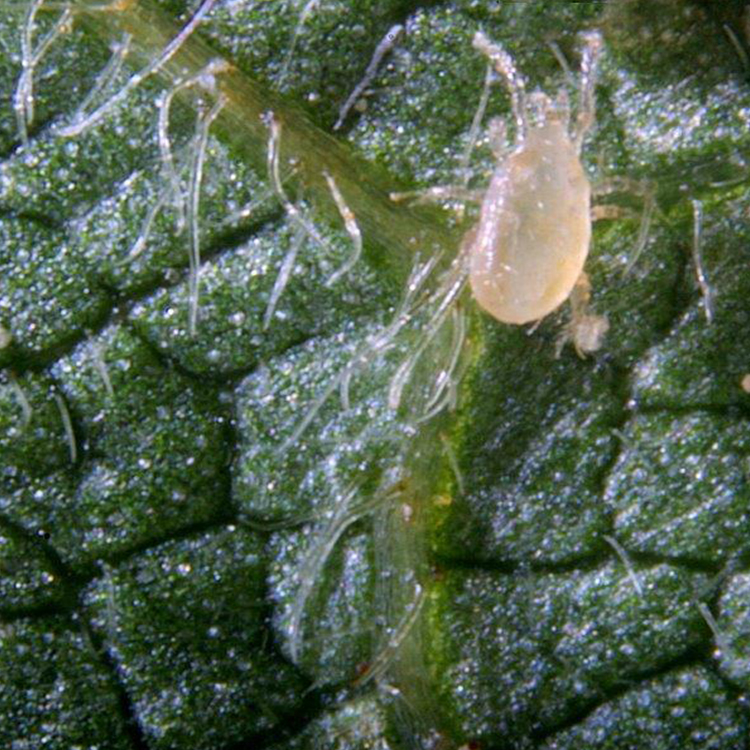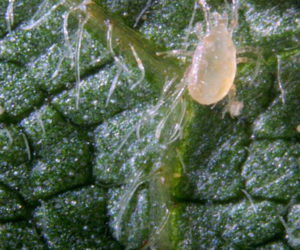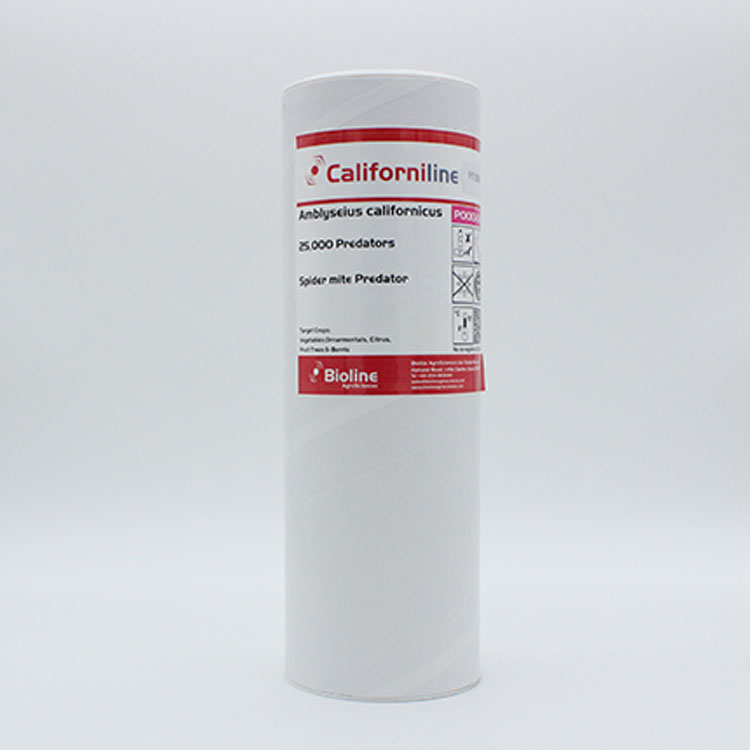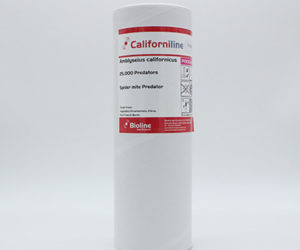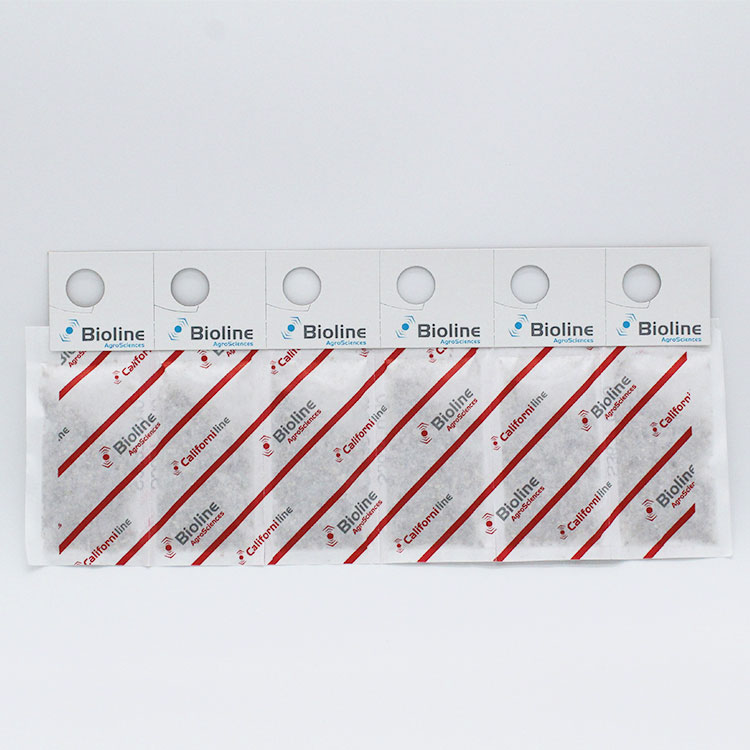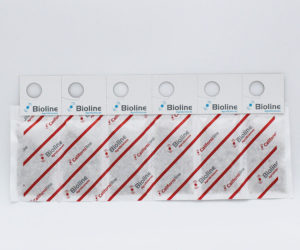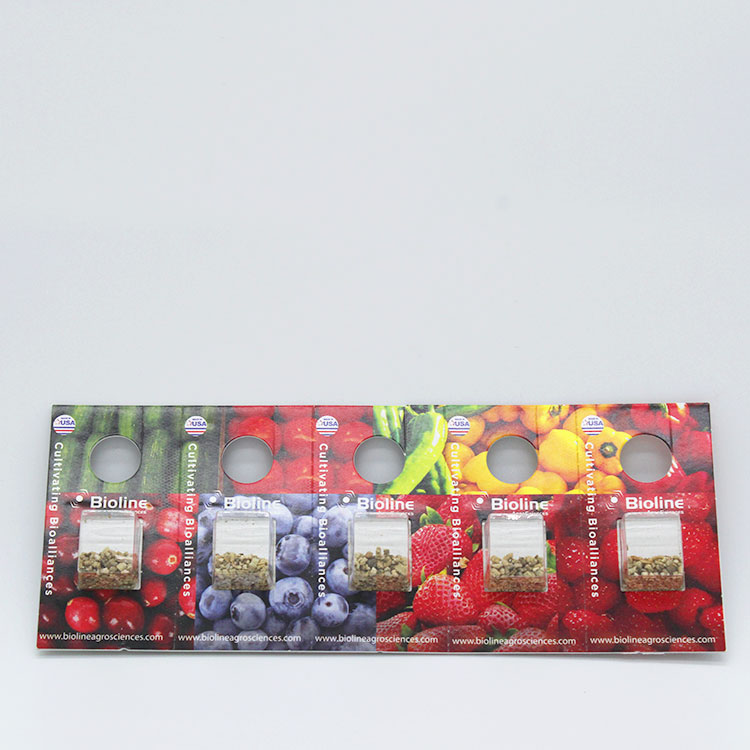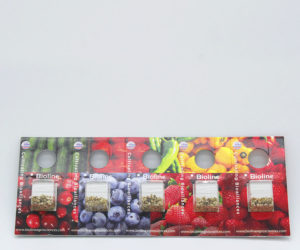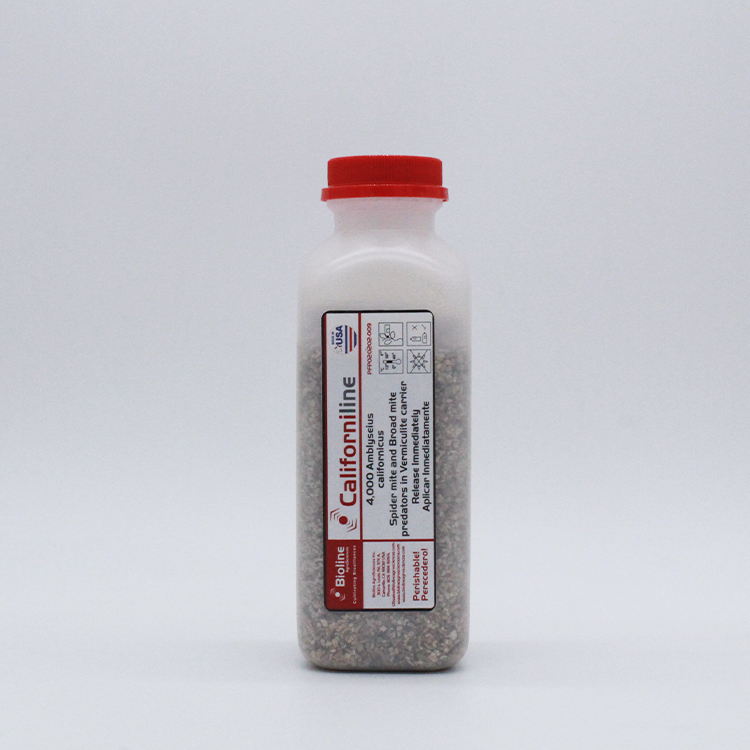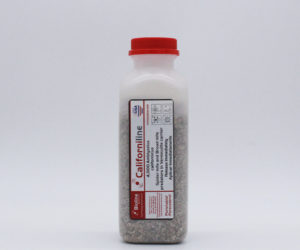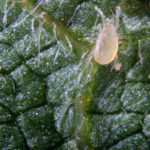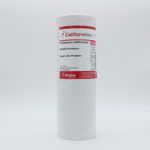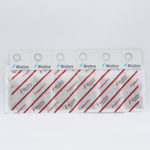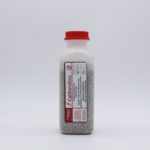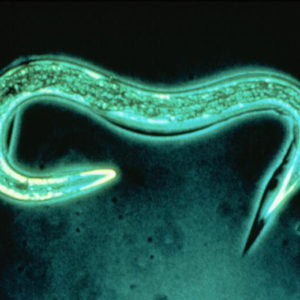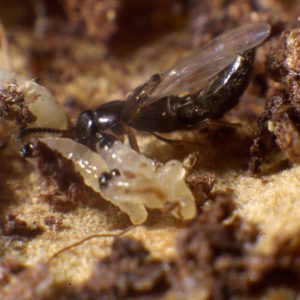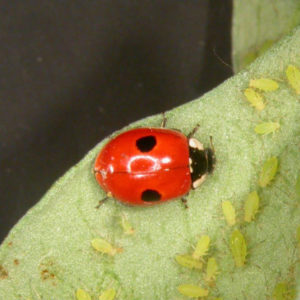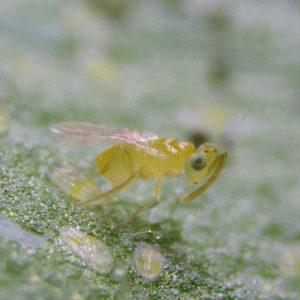Description
![]()
Californiline contains the generalist predatory mite, Amblyseius californicus. This species can be used at higher temperatures and lower humidity than A. cucumeris or A. andersoni, making it a great broad mite predator in challenging environments. Use of loose product in high numbers allows an instant curative treatment while CRS introductions give longer preventative control.
Target Crops » All crops
Target Pest » Broad Mite, Cyclamen Mite, Spider Mites including two spotted spider mite (Tetranychus urticae) and Camine mite (Tetranychus cinnabarius)
Target Life Stage » Whole life cycle
Delivery Systems » Sachets, Bags & Tubes
Key Features
- Generalist predator which can also feed on pollen and other arthropods.
- Persists longer in the crop than many other spider mite predators.
- Active in high temperature and low humidity conditions.
Target Pests
- Two-spotted spider mite
- Carmine mite
How It Works
- Feeds on mites in the family Tetranychidae, including the common two-spotted mite, Tetranychus urticae, and the carmine mite, Tetranychus cinnabarinus.
- Total development time at 21°C / 69.8°F is nearly 10 days, while at 30°C / 86°F development time is reduced to five days. These temperatures align with the temperatures at which their principal prey, the two-spotted spider mite, develops.
- The Tetranychus urticae lifecycle is 16 and 7 days at these temperatures, respectively. Amblyseius californicus is active within the temperature range of 13-35°C / 54-95°F.
Available delivery systems
Sachets
- Sachets release a breeding colony of mites onto the plant, even before the target pest is present. The breeding colony is contained within a small paper sachet, which is carefully designed to maintain the colony in good condition. Mites continue to emerge from sachets over several weeks and in much higher numbers than with a single broadcast release
Gemini sachets
- Gemini sachets are best used with crops that are watered via overhead irrigation or where a horizontal wire or string exists. Gemini sachets are water-resistant because the release holes are inside the folded sachets, so the contents are protected from the water. Gemini sachets offer the following benefits:
- Unique, patented, water-resistant twin sachet design with two predator-breeding compartments.
Water runs off outer surface and keeps inner surface and emergence holes dry, so sachet contents are protected.
There is no hook to get wet, so sachets remain in plants. - Water-resistant design allows for maximum emergence of predatory mites.
Bulk Bags & Tubes
- Available as loose material in 125ml bottle containing 2,000 mites or 1L cardboard tube containing 25,000 mites.
- For advice on recommended release rates, consult The Bioline App.
Handling & Storage
Instructions for Gemini or Mini Sachet
- Do not hang adjacent to heating pipes.
- Do not hang sachets where they will be directly exposed to intense sunlight.
- Open the shipping box of sachets in the crop.
- Separate sachets by tearing along perforations.
Instructions for Bulk Tubes
- Keep containers horizontal and cool until use.
- Do not expose to direct sunlight at any time.
- Immediately before opening, gently rotate the container to distribute mites evenly throughout the carrier.
- Open each container in the crop when ready to use.
- Sprinkle the mixture onto the leaves of the crop, applying more into and around developing spider mite colonies.
Storage and transport
- Keep out of direct intense sunlight.
- Transport and store at 10-15ºC /50-59ºF and >65% humidity.
- Use within 18 hours of receipt.
